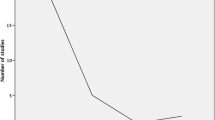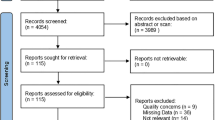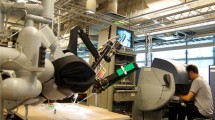Abstract
The aim of this study is to demonstrate the hypothesis that the experience of the surgeon is sufficient to partially compensate for the lack of haptic feedback of the robotic system da Vinci Si HD (Intuitive®). Twenty-five international surgeons belonging to different areas of surgical specialization were divided into two groups of investigation: experts and non-experts in the use of da Vinci Platform. This allocation was made on the basis of the following criteria: the number of performed procedures, the number of robotic working days and the number of true console hours. All participants underwent a specific test to assess their ability to recognize the thickness of custom-made membranes, without the availability of haptic feedback. After the performance of the surgeons, score was given according to an appropriate evaluation system (time, preciseness, force of tension and finding a metallic object). The analysis of the performances of participants provided the following results: an average score of 8.87 for the experts compared to 3.57 of non-experts with significant difference (P < 0.05). Other parameters of interest as the average time to conduct the test showed a result of 28.8 s for experts and 71.3 s of non-experts. After our results, a significant difference between the two groups in terms of performance was found. Our hypothesis that the expertise ability of the experts might partially overcome the lack of haptic feedback was confirmed. Probably visual feedback may play a role.



Similar content being viewed by others
References
Wedmid A, Llukani E, Lee DI (2011) Future perspectives in robotic surgery. BJU Int 108(6 Pt 2):1028–1036. doi:10.1111/j.1464-410X.2011.10458.x
Lüttgen J, Heuer H (2012) Robotic guidance benefits the learning of dynamic, but not of spatial movement characteristics. Exp Brain Res 222(1–2):1–9. doi:10.1007/s00221-012-3190-9
Kaul S, Shah NL, Menon M (2006) Learning curve using robotic surgery. Curr Urol Rep 7(2):125–129
Tholey G, Desai JP, Castellanos AE (2005) Force feedback plays a significant role in minimally invasive surgery: results and analysis. Ann Surg 241(1):102–109
Reiley CE, Akinbiyi T, Burschka D, Chang DC, Okamura AM, Yuh DD (2008) Effects of visual force feedback on robot-assisted surgical task performance. J Thorac Cardiovasc Surg 135(1):196–202. doi:10.1016/j.jtcvs.2007.08.043
van der Meijden OA, Schijven MP (2009) The value of haptic feedback in conventional and robot-assisted minimal invasive surgery and virtual reality training: a current review. Surg Endosc 23(6):1180–1190. doi:10.1007/s00464-008-0298-x
Cundy TP, Gattas NE, Yang GZ, Darzi A, Najmaldin AS (2014) Experience related factors compensate for haptic loss in robot-assisted laparoscopic surgery. J Endourol 28(5):532–538. doi:10.1089/end.2013.0671
Hashizume M, Shimada M, Tomikawa Y, Ikeda Y, Takahashi I, Abe R, Koga F, Gotoh N, Konishi K, Maehara S, Sugimachi K (2002) Early experiences of endoscopic procedures in general surgery assisted by a computer-enhanced surgical system. Surg Endosc 16(8):1187–1191
Sung GT, Gill IS (2001) Robotic laparoscopic surgery: a comparison of the da Vinci and Zeus systems. Urology 58(6):893–898
Shennib H, Bastawisy A, Mack M, Moll FH (1998) Computer-assisted telemanipulation: an enabling technology for endoscopic coronary artery bypass. Ann Thorac Surg 66:1060–1063
Chitwood WR (2005) Current status of endoscopic and robotic mitral valve surgery. Ann Thor Surg 79(6):S2248–S2253
Nifong LW, Chitwood WR, Pappas PS, Smith CR, Argenziano M, Starnes VA, Shah PM (2005) Robotic mitral valve surgery: a United States multicenter trial. J Thorac Cardiovasc Surg 129(6):1395–1404
Acknowledgments
The authors thank all the other surgeons involved in our study: M. Eesa, G. Filograna Pignatelli, M. Fiori, E. Hendawy, L. Khasawneh, S. Moriniere, P. Renard, L. Russo, B. Autiero Celindonio, M. Bassi, A. Ciabotti, G. Cremonini, G. D’Agostino, A. De Virgilio, A. De Vito, P. Di Mauro.
Author information
Authors and Affiliations
Corresponding author
Ethics declarations
Conflict of interest
Claudio Vicini, Federico Faedi, Saleh Alghamdi, Filippo Montevecchi, Giuseppe Meccariello, Elisabetta Firinu, Claudia Zanotti, Davide Cavaliere, Roberta Gunelli, Marco Taurchini and Andrea Amadori declare that they have no conflict of interest.
Informed consent
This article does not contain any studies with human or animal subjects performed by any of the authors.
Rights and permissions
About this article
Cite this article
Meccariello, G., Faedi, F., AlGhamdi, S. et al. An experimental study about haptic feedback in robotic surgery: may visual feedback substitute tactile feedback?. J Robotic Surg 10, 57–61 (2016). https://doi.org/10.1007/s11701-015-0541-0
Received:
Accepted:
Published:
Issue Date:
DOI: https://doi.org/10.1007/s11701-015-0541-0




